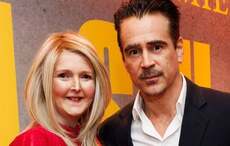A documentary filmmaker is hoping to create an interactive online project of Arthur Fields, a Dublin street photographer who became a Dublin institution.
Fields was a Jewish man who left the Ukraine at the breakout of World War II, he became a well-known photographer who snapped photos of people on O'Connell Bridge from the 1930s until he retired in 1985. He took an estimated 182,500 photographs throughout his career, including one of The Beatles' George Harrison when he was just a boy.
Filmmaker Ciaran Deeney wants to tell the photographer's story in the online documentary project 'Man on Bridge.'
“We thought that as this is all about the visual this would be great to do online. There is no where that will fund an online, new media project like this so we hope to get funding from the Arthur Guinness Project Fund," Deeney told TheJournal.ie.
“Arthur was an extraordinary man. We have done many interviews and there are countless stories about him and the people that he took photos of. We want to create a space where people can learn about him, but where they can become part of the story too. We want people to be able to interact with the project, tell their stories about the their photos, and to upload their pictures too,” he said.
“He had to flee his home in the Ukraine in the 1930s. When he arrived in Dublin he first started taking photos using a box camera, then he moved on to a 35 mm black and white camera and then polaroids. What is interesting is that as cameras came more accessible over the years, the other street photographers started to drop off, but Arthur was the last one,” he said.
Fields would take photos of passersby on the bridge and give them a ticket. Field's wife would develop the pictures around the corner and they could be collected later that day or the next day, Deeney explained.
"In the 1930s, O’Connell Street was a thoroughfare, so their were lots of people that would be out taking a stroll. It was a place to be seen. Through his photos, Arthur created a social narrative of the bridge and the people that crossed it. By the time he came to the end in the 80s, lots had changed," he said.
"In the earlier pictures you can see it is a well-to-do place to be seen, but in the photos of the 1980s McDonalds and other chain establishments can be seen in the background. At that point though, Arthur didn’t go there to work or to earn money – he continued to go everyday as this was his life’s work."
The documentary is one of many arts project in the running for the Arthur Guinness Projects. To vote for this project click here by Friday August 23.
Here’s footage uploaded by Arthur Field’s son on YouTube




Comments